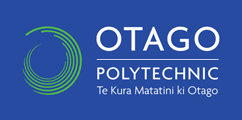Victoria University of Wellington is a university in Wellington, New Zealand. It was established in 1897 by Act of Parliament, and was a constituent college of the University of New Zealand.

Massey University is a university based in Palmerston North, New Zealand, with significant campuses in Albany and Wellington. Massey University has approximately 30,883 students, 13,796 of whom are extramural or distance-learning students, making it New Zealand's second largest university when not counting international students. Research is undertaken on all three campuses, and more than 3,000 international students from over 100 countries study at the university.

The University of Otago is a collegiate university based in Dunedin, Otago, New Zealand. It scores highly for average research quality, and in 2006 was second in New Zealand only to the University of Auckland in the number of A-rated academic researchers it employs. In the past it has topped the New Zealand Performance Based Research Fund evaluation.

Palmerston North is a city in the North Island of New Zealand and the seat of the Manawatū-Whanganui region. Located in the eastern Manawatu Plains, the city is near the north bank of the Manawatu River, 35 km (22 mi) from the river's mouth, and 12 km (7 mi) from the end of the Manawatu Gorge, about 140 km (87 mi) north of the capital, Wellington. Palmerston North is the country's eighth-largest urban area, with an urban population of 81,500.

The University of New Zealand was New Zealand's sole degree-granting university from 1874 to 1961. It was a collegiate university embracing several constituent institutions at various locations around New Zealand. After it was dissolved in 1961 New Zealand had four independent degree-granting universities and two associated agricultural colleges: the University of Otago (Dunedin), University of Canterbury (Christchurch), University of Auckland (Auckland), Victoria University of Wellington (Wellington), Canterbury Agricultural College (Lincoln) and Massey Agricultural College.
Postcodes in New Zealand consist of four digits, the first two of which specify the area, the third the type of delivery, and the last the specific lobby, RD number, or suburb. The present postcode system was introduced in New Zealand in June 2006, which, unlike the previous system, applies to all items of mail with effect from June 2008. In October 2008, New Zealand Post launched a 'remember your postcode' campaign, offering a NZ$10,000 prize for remembering a postcode.
Unitec Institute of Technology is the largest institute of technology in Auckland, New Zealand. 16,844 students study programmes from certificate to postgraduate degree level across a range of subjects from architecture to zookeeping. Unitec is a member of the International Association of Universities.

Massey High School is a co-educational state secondary school in Auckland, New Zealand established in 1969. The school is located on the western edge of the city, thus obtaining students from both suburban and rural backgrounds. In 2017 it was rated decile 4.

Otago Polytechnic is a public New Zealand tertiary education institute, centred in Dunedin with additional campuses in Cromwell and Auckland.
Chaff was the students' newspaper of Massey University Students' Association (MUSA) at the Turitea campus of Massey University, New Zealand. Chaff was established in 1934 as a semi-regular, type-written newsletter for students of Massey Agricultural College. As throughout its 79-year run it mixed local news with comment, humour, competitions and correspondence.

Whitireia New Zealand, previously called Whitireia Community Polytechnic and Parumoana Community College, is a government-owned and funded tertiary education institute in New Zealand. It was established in 1986 on the shores of Porirua Harbour and today has 7,500 students, with campuses in Auckland, Wellington, Petone and Porirua.
Pakistani New Zealanders, also known as Pakistani Kiwis, are New Zealanders of Pakistani descent or Pakistan-born people who have immigrated to New Zealand. Pakistani Kiwis are predominantly Muslims, and most descend from a Baloch background.

Tertiary education in New Zealand is provided by universities, institutes of technology and polytechnics, private training establishments, industry training organisations, and wānanga. It ranges from informal non-assessed community courses in schools through to undergraduate degrees and research-based postgraduate degrees. All post-compulsory education is regulated within the New Zealand Qualifications Framework, a unified system of national qualifications for schools, vocational education and training, and 'higher' education. The New Zealand Qualifications Authority (NZQA) is responsible for quality assuring all courses and tertiary education organisations other than universities. Under the Education Act 1989, The Committee on University Academic Programmes (CUAP) and the Academic Quality Agency (AQA) have delegated authority for quality assurance of university education. The Tertiary Education Commission (TEC) is responsible for administering the funding of tertiary education, primarily through negotiated investment plans with each funded organisation.

Te Whakaruruhau o Ngā Reo Irirangi Māori is a New Zealand radio network consisting of radio stations that serve the country's indigenous Māori population. Most stations receive contestable government funding from Te Māngai Pāho, the Māori Broadcast Funding Agency, to operate on behalf of affiliated iwi (tribes) or hapū (sub-tribes). Under their funding agreement, the stations must produce programmes in the Māori language, and must actively promote Māori culture.
Sopolemalama Filipe Tohi is a Tongan artist who has lived in New Zealand since 1978. He has exhibited in major exhibitions in New Zealand and abroad. Several major collections include his work. The 2010 Art and Asia Pacific Almanac describes him as "Tongan art's foremost ambassador".
Saffronn Te Ratana is a visual artist of Māori descent, born in Palmerston North, New Zealand. Te Ratana went to Palmerston Intermediate Normal School, followed by Palmerston North Girls’ High School.
The 1959 New Year Honours in New Zealand were appointments by Elizabeth II on the advice of the New Zealand government to various orders and honours to reward and highlight good works by New Zealanders. The awards celebrated the passing of 1958 and the beginning of 1959, and were announced on 1 January 1959.

Tina Makereti is a New Zealand novelist, essayist, and short story writer, editor and creative writing teacher. Her work has been widely published and she has been the recipient of writing residencies in New Zealand and overseas. Her book Once Upon a Time in Aotearoa, won the inaugural fiction prize at the Ngā Kupu Ora Māori Book Awards in 2011 and Where the Rēkohu Bone Sings won the Ngā Kupu Ora Aotearoa Māori Book Award for Fiction in 2014. She lives on the Kapiti Coast, New Zealand.
The 1975 Queen's Birthday Honours in New Zealand, celebrating the official birthday of Elizabeth II, were appointments made by the Queen on the advice of the New Zealand government to various orders and honours to reward and highlight good works by New Zealanders. They were announced on 14 June 1975.









